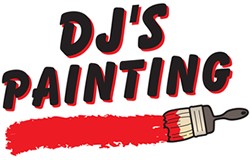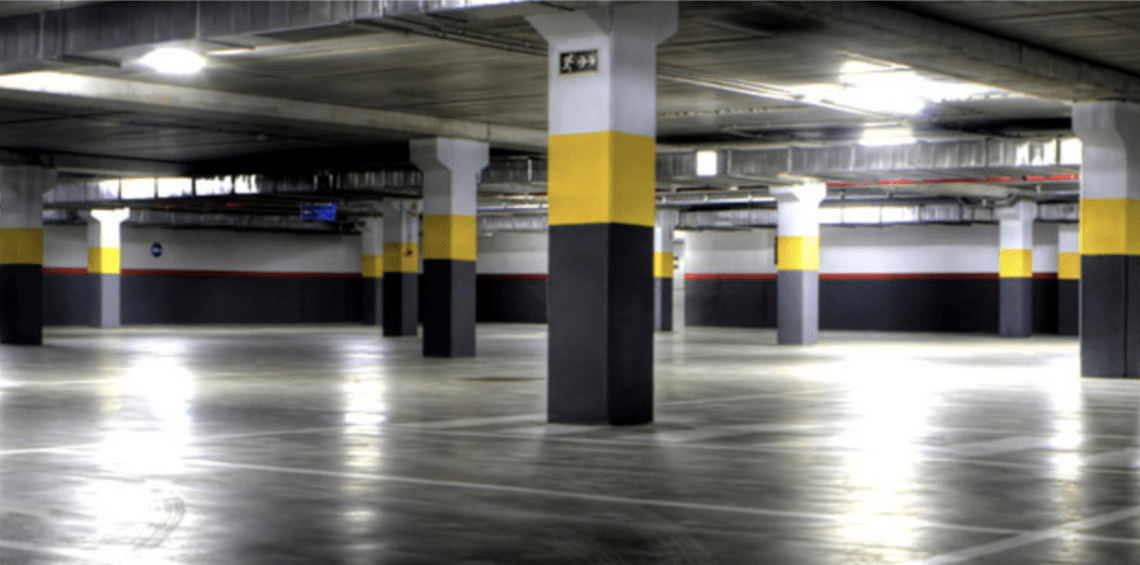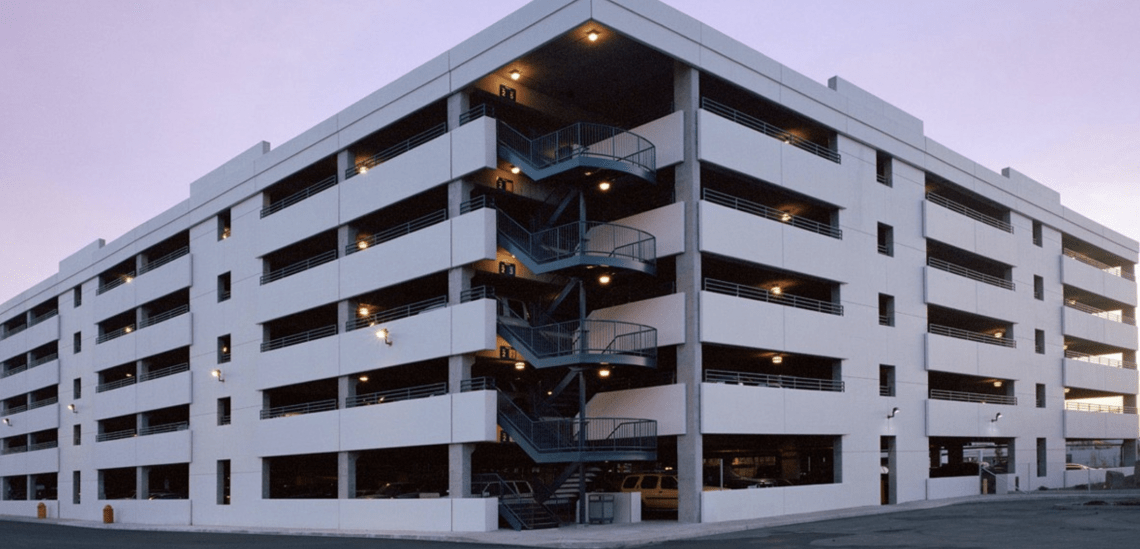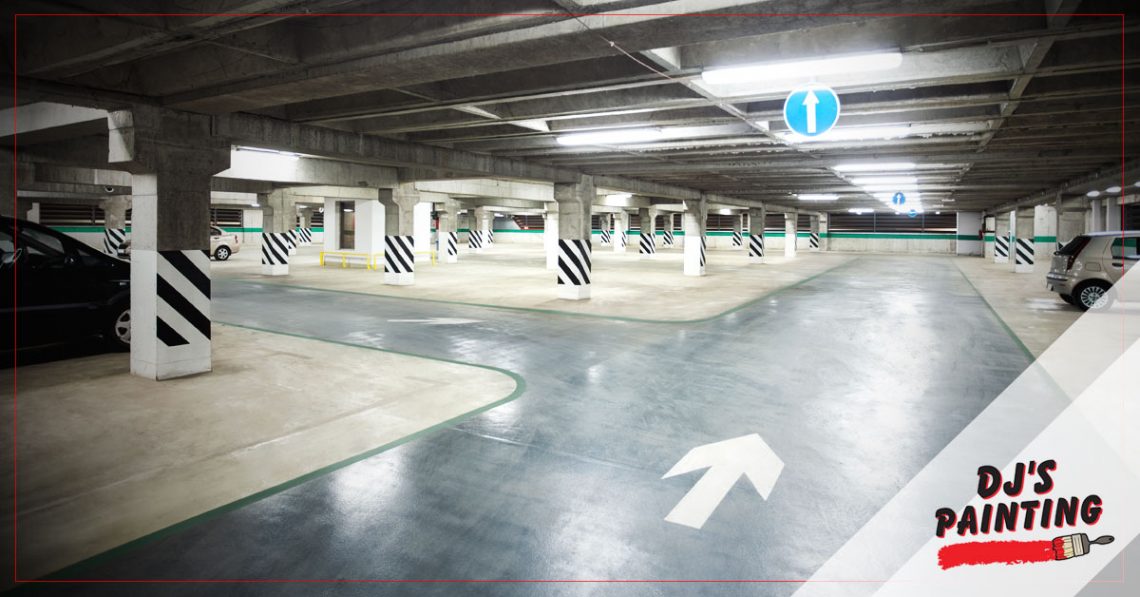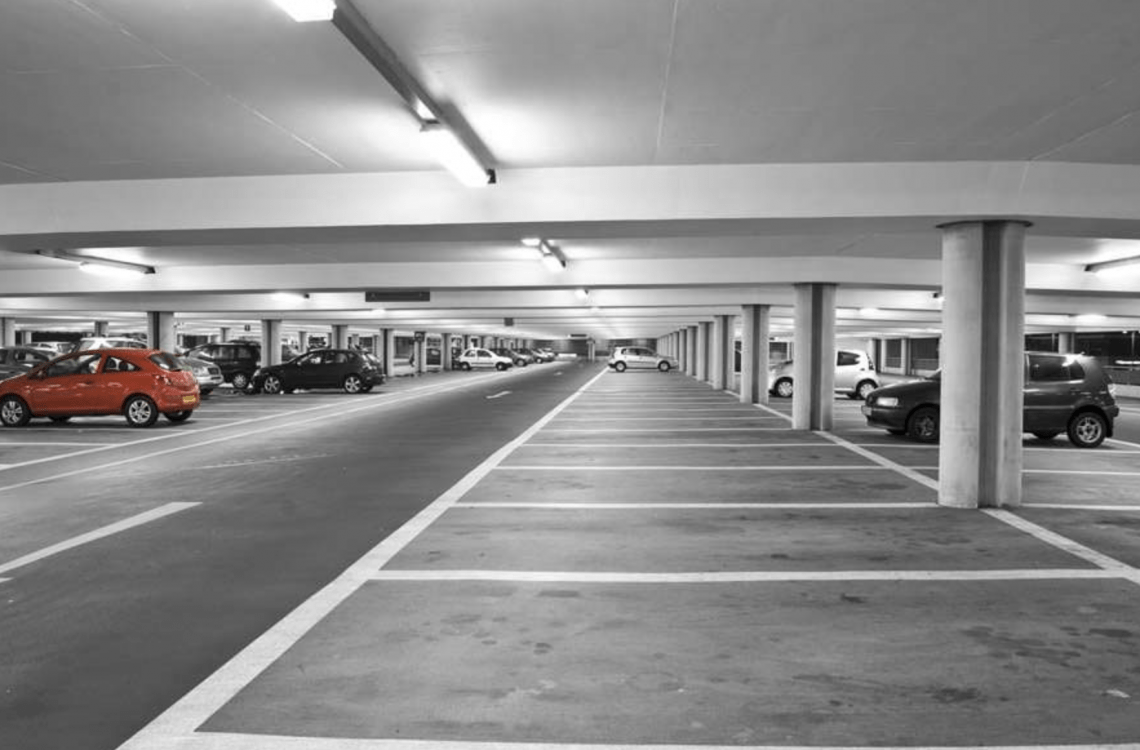Concrete Structures Overview
Most parking structures are mainly concrete. Concrete is a “hard sponge.” Along with the steel reinforcements inside the concrete slabs, concrete is a seemingly indestructible building material. This is true until… water, along with salts and other contaminates, permeate into the “hard sponge.” This water and other contaminates, act like kryptonite for that super strong steel inside. When the steel inside the slab starts to rust, it swells causing the concrete to break up… and … spalling has begun. Some of you may not understand what spalling actually is, so to break it down for you, spalling is when the concrete breaks off into little fragments. So, to stop this spalling and the eventual destruction of the parking structure, we need to keep the water out of the slabs.
The best way to keep the water out of the slab is to properly coat all sides of the slabs with the appropriate materials. There are 4 main areas that need to be addressed: Floors, Walls, Ceilings and Control Joints.
Floors
Since the slab will expand and contract as the temperatures fluctuate, the material used on the floor/deck need to be flexible. The steps for installing a flexible flooring system include: repair the spalling, grind the concrete, patch any cracks, and apply a waterproof floor system. There are many good flexible urethane coatings than can be applied such as Floor Skinz Elasti-deck or CFI WearCoat 100 Polyester Urethane Topcoat.
Walls
Pressure wash to clean, repair spalling, and apply a waterproofing system. For an opaque look, SW Loxon XP is one of my favorites. For a clear finish, Floor Skinz Super Hydro Phobic Sealer is great. This product is completely invisible and has no sheen. Both systems will last 7-10 years.
Ceilings
If the ceiling is masonry, I would recommend using a similar system as was used for the walls, however if the ceilings are metal, as is the case in many older structures, we would use an entirely different system. The system of choice for metal ceilings would be to grind or blast rusted areas and then apply an epoxy base coat followed by a 2 part urethane top coat. One of my favorite base coats is SW Macropoxy and SW Acrolon Topcoat.
Control Joints
The first step would be to replace control joints that are failing. Many painting contractors use a single component urethane caulk like NP-1, but we prefer SW Loxon H1. This is a hybrid urethane sealant and I believe it will hold up longer than traditional urethane sealants
